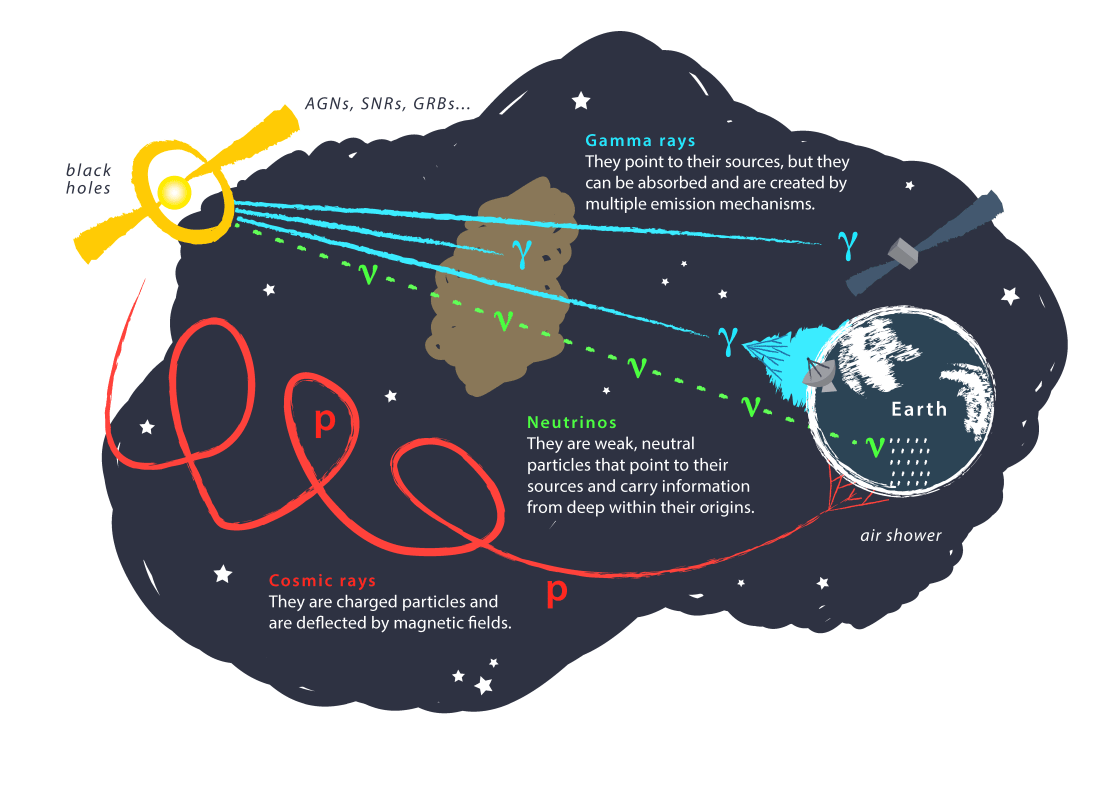Solving the mystery of the origin of cosmic rays will not happen with a “one-experiment show.” High-energy neutrinos might be produced by galactic supernova remnants or by active galactic nuclei as well as other potential sources that are being sought. And, if our models are right, gamma rays at lower energies could also help identify neutrino sources and, thus, cosmic-ray sources. It’s sort of a “catch one, get them all” opportunity.
IceCube’s collaborative efforts with gamma-ray, X-ray, and optical telescopes started long ago. Now, the IceCube, MAGIC and VERITAS collaborations present updates to their follow-up programs that will allow the gamma-ray community to collect data from specific sources during periods when IceCube detects a higher number of neutrinos. Details of the very high energy gamma-ray follow-up program have been submitted to the Journal of Instrumentation.

From efforts begun by its predecessor AMANDA, IceCube initiated a gamma-ray follow-up program with MAGIC for sources of electromagnetic radiation emissions with large time variations. If we can identify periods of increased neutrino emission, then we can look for gamma-ray emission later on from the same direction.
For short transient sources, such as gamma-ray bursts and core-collapse supernovas, X-ray and optical wavelength telescopes might also detect the associated electromagnetic radiation. In this case, follow-up observations are much more time sensitive, with electromagnetic radiation expected only a few hours after neutrino emission from a GRB or a few weeks after a core-collapse supernova.
Updates to this transient follow-up system will use a multistep high-energy neutrino selection to send alerts to gamma-ray telescopes, such as MAGIC and VERITAS, if clusters of neutrinos are observed from a predefined list of potential sources. The combined observation of an increased neutrino and gamma-ray flux could point us to the first source of astrophysical neutrinos. Also, the information provided by both cosmic messengers will improve our understanding of the physical processes that power those sources.
The initial selection used simple cuts on a number of variables to discriminate between neutrinos and the atmospheric muon background. IceCube, MAGIC, and VERITAS are currently testing a new event selection that uses learning machines and other sophisticated discrimination algorithms to take into account the geometry and time evolution of the hit pattern in IceCube events. Preliminary studies show that this advanced event selection has a sensitivity comparable to offline point-source samples, with a 30-40% sensitivity increase in the Northern Hemisphere with respect to the old selection. The new technique does not rely only on catalogues of sources and allows observing neutrino flares in the Southern Hemisphere. Thus, those alerts will also be forwarded to the H.E.S.S. collaboration, expanding the gamma-ray follow-up program to the entire sky.
During the last few years, IceCube has sent several alerts to VERITAS and MAGIC that have not yet resulted in any significant correlation between neutrino and gamma-ray emission. For some of those, however, the source was not in the reach of the gamma-ray telescopes, either because it was out of the field of view or due to poor weather conditions. Follow-up studies have allowed setting new limits on high-energy gamma-ray emission.
With the increased sensitivity in the Northern Hemisphere and new alerts to telescopes in the Southern Hemisphere, the discovery potential of these joint searches for neutrino and gamma-ray sources is greatly enhanced. Stay tuned for new results!
+ info “Very High-Energy Gamma-Ray Follow-Up Program Using Neutrino Triggers from IceCube,” The IceCube Collaboration, the MAGIC Collaboration, the VERITAS Collaboration. Journal of Instrumentation 11 (2016) 11, iopscience.iop.org arxiv.org/abs/1610.01814